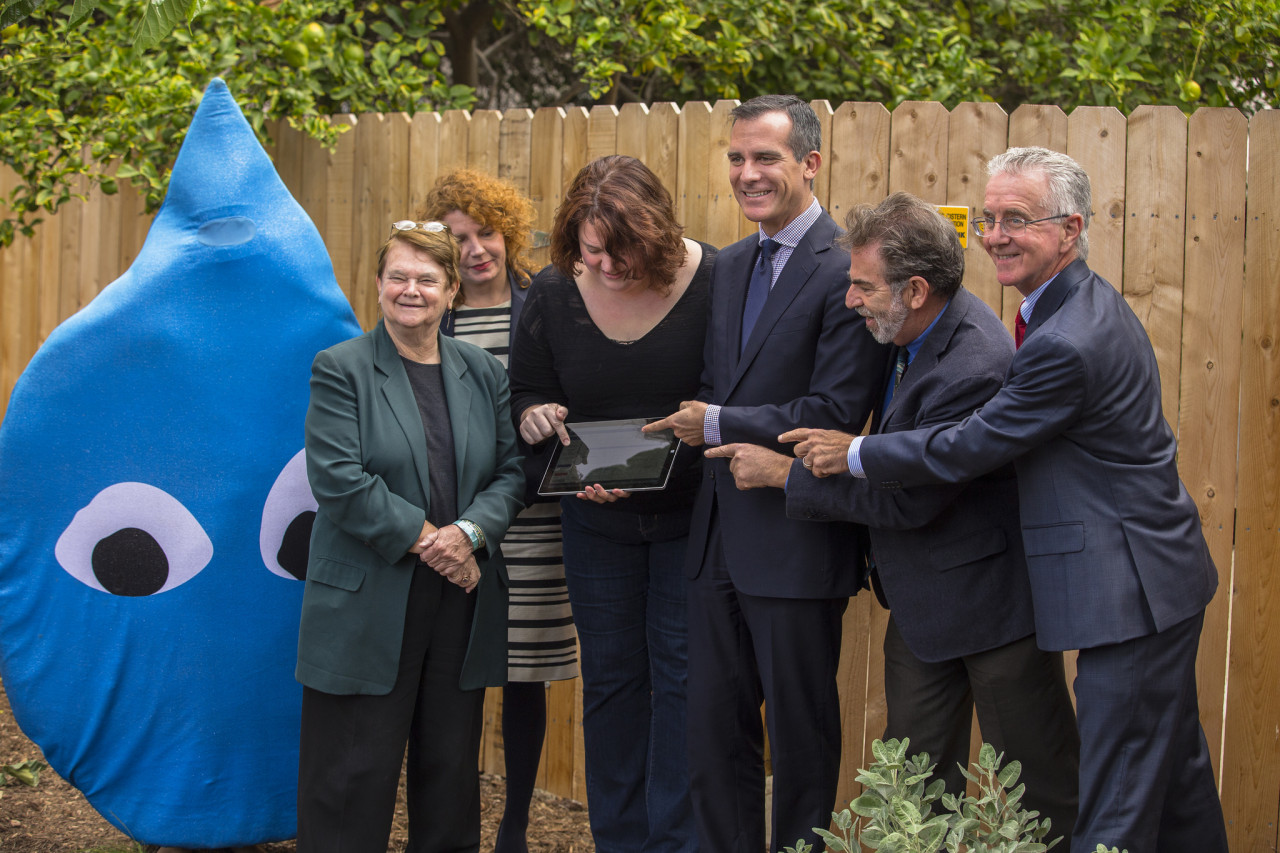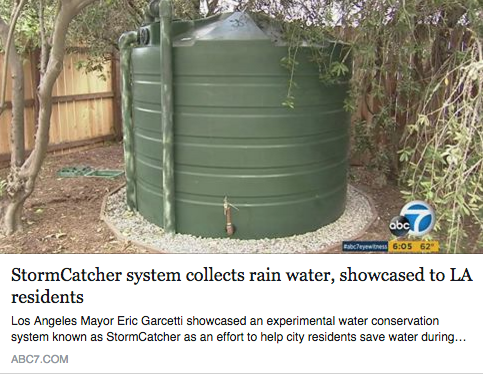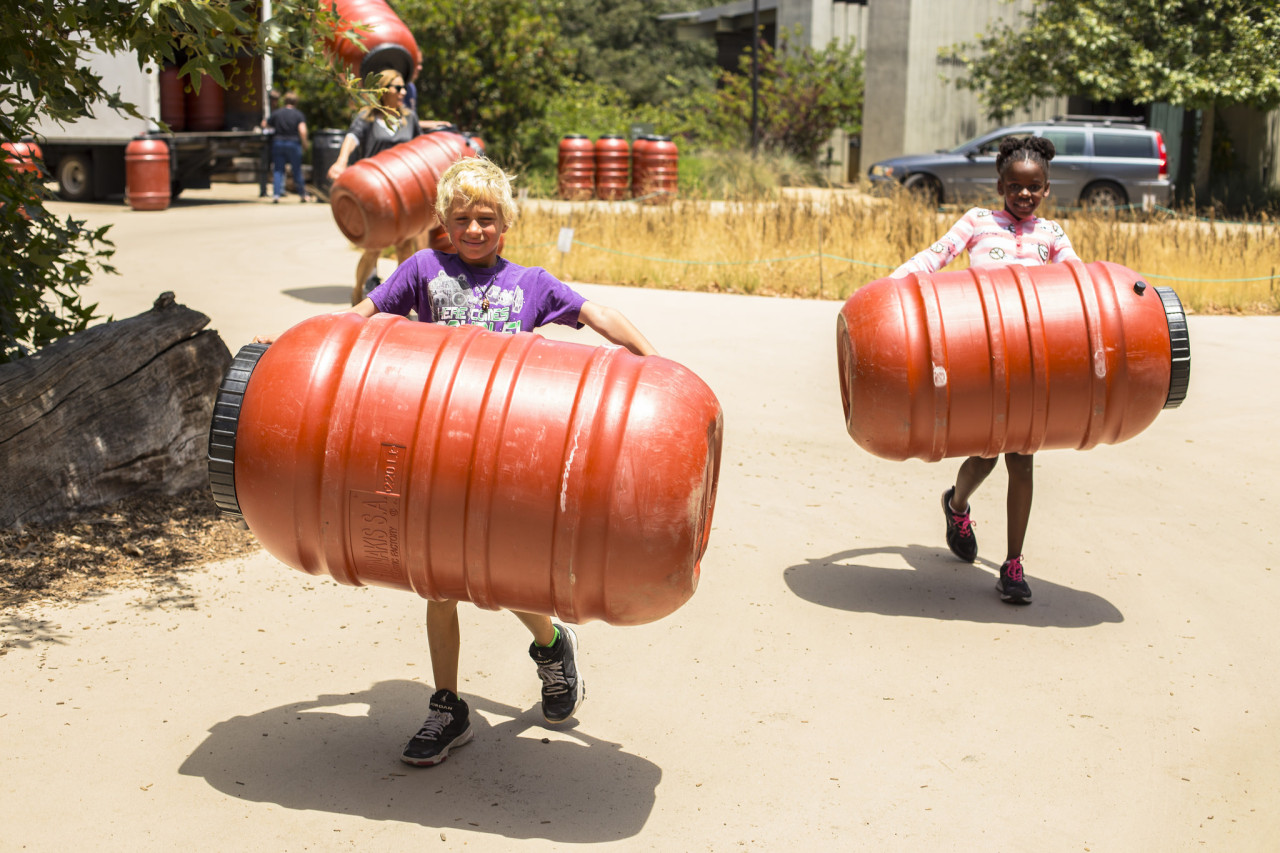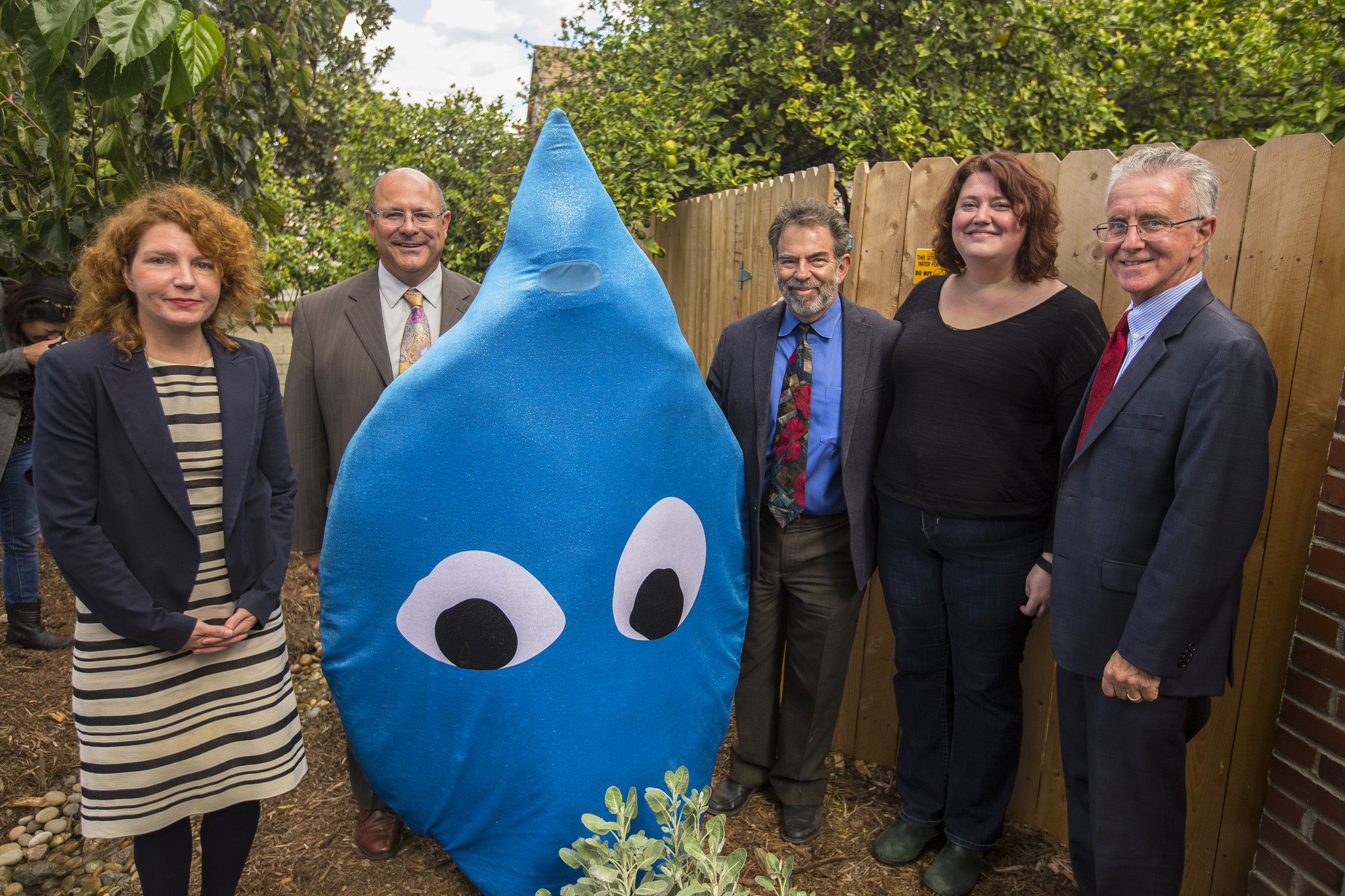In early November, we debuted our groundbreaking pilot project: LA StormCatcher (#LAStormCatcher). The collaborative brings Los Angeles County and City agencies and community members together to capture stormwater in the face of ongoing drought and a changing climate reality.
Our first pilot site, located in North Hollywood, kicks off a series of renovations designed to show how capturing stormwater at home can increase local water supply, reduce flooding and improve water quality. The project launched with a press conference that brought a rush of positive buzz and interest, and even had LA’s own Mayor Garcetti and County Supervisor Sheila Kuehl in attendance.
Curious to learn more? Read on for our answers to some of your most frequently asked questions.

Q. What makes LA StormCatcher important?
A. With the prolonged drought and potential flooding risks this winter, it’s increasingly important to find solutions to LA’s water management issues.
Los Angeles homes have been designed to send rainwater into the streets, where it is directed into storm drains and ultimately into our rivers and ocean. This “stormwater runoff” is not only wasted water, but also the biggest source of pollution to our local waterways and ocean.
Australia endured a 12-year Millennium Drought largely because residents widespread collection of stormwater using rain tanks and cisterns. Australia’s experience proved these solutions are both efficient and cost-effective ways to secure a local, reliable water supply.
Taking this valuable lesson one step further, LA StormCatcher incorporates new cloud-based technology to create “smart cisterns.” A smart cistern is outfitted with networked monitoring and control capabilities . In other words, the tank knows when rain is coming, and will store or release water to optimize irrigation, recharge groundwater and prevent flooding. The results of the pilot will be analyzed to learn how these systems could be deployed across LA to maximum benefit.
Q. How were the participants selected?
A. Pilot sites were selected based on rigorous criteria, including access to an aquifer for groundwater recharge, soil conditions, ample space for a cistern, and residents’ willingness to maintain the system. A variety of sites were chosen to assess how residential stormwater capture can be taken to scale across LA.
Q. Isn’t collecting rainwater illegal?
A. Collecting rainwater from rooftops is legal and encouraged in LA! Storing and using rainwater is a practice which has been done around the world for generations. Each city and county has specific guidelines on the collection, storage, treatment and use of rainwater.
Q. Can I still apply to be part of LA StormCatcher? If so, how?
A. Unfortunately, the LA StormCatcher pilot is no longer accepting applicants. However, if you would like additional information about rainwater harvesting opportunities or to be considered for potential future pilot projects, please take a moment to complete this online form.

Q. If I’m not selected, can I still get a cistern? Are there rebates available?
A. Yes! Cistern installation must be conducted by a certified designer and installer. To find an accredited professional in your area, visit the American Rainwater Catchment Systems Association. Rebates up to $300 are also available for LA residents! More information can be found at the MWD website.
Q. How much would a cistern cost?
A. Today, materials for a basic cistern system with about a thousand gallons of storage capacity could cost as little as $3,000. That includes the cistern, gutters, pipes and some very basic drought-friendly landscaping. Currently, to include the smart technology that integrates the system with cloud-based weather software is an additional expense of several thousand dollars.
We expect to see cisterns become more affordable in the future as local manufacturing reduces shipping costs and market expansion increases installer options. In particular, the price of smart cistern technology should plummet at scale. Consider solar panels, for instance. In 1977, solar energy cost $76.77 a watt. As demand increased, price decreased significantly. Today, it’s less than 62 cents per watt.
Q. I’m not quite ready for a cistern… Are there any other ways to capture the rain?
A. Certainly! Rain barrels are a great start to capture rainwater. Check out some of our DIY resources and free workshops to learn how!

Q. How else can I get involved?
A. You can still make an impact by using rain barrels and designing your home with California-friendly landscapes. We can teach you how! Visit TreePeople’s website to find a variety of workshops, how-to’s and other resources.

